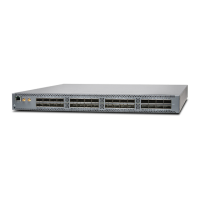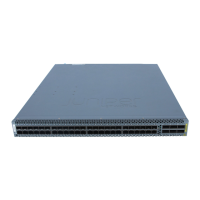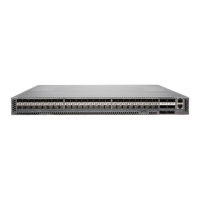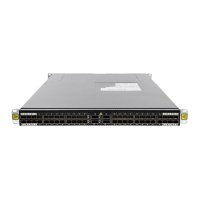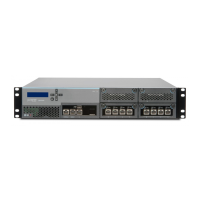Ensure that you have the following parts and tools available:
•
DC power source cables (14–16 AWG) with ring lug (Molex 190700069 or equivalent) (not provided)
•
Phillips (+) screwdriver, number 2 (not provided)
•
Multimeter (not provided)
To connect DC power to a QFX5110:
1. Attach the grounding strap to your bare wrist and to a site ESD point.
2. Verify that the DC power cables are correctly labeled before making connections to the power supply.
In a typical power distribution scheme where the return is connected to chassis ground at the battery
plant, you can use a multimeter to verify the resistance of the –48V and RTN DC cables to chassis
ground:
•
The cable with very low resistance (indicating a closed circuit) to chassis ground is positive (+) and
will be installed on the V+ (return) DC power input terminal.
•
The cable with very high resistance (indicating an open circuit) to chassis ground is negative (–) and
will be installed on the V– (input) DC power input terminal.
CAUTION: You must ensure that power connections maintain the proper polarity.
The power source cables might be labeled (+) and (–) to indicate their polarity. There
is no standard color coding for DC power cables. The color coding used by the
external DC power source at your site determines the color coding for the leads
on the power cables that attach to the DC power input terminals on each power
supply.
3. Ensure that the input circuit breaker is open so that the voltage across the DC power source cable
leads is 0 V and that the cable leads do not become active while you are connecting DC power.
NOTE: The V+ terminals are referred to as +RTN, and V– terminals are referred to as –48 V
in “DC Power Wiring Sequence Warning” on page 251 and “DC Power Electrical Safety
Guidelines” on page 245.
4. Ensure that the power supplies are fully inserted in the chassis.
5. Remove the terminal block cover. The terminal block cover is a piece of clear plastic that snaps into
place over the terminal block (see Figure 64 on page 274).
272
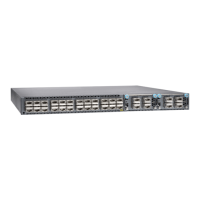
